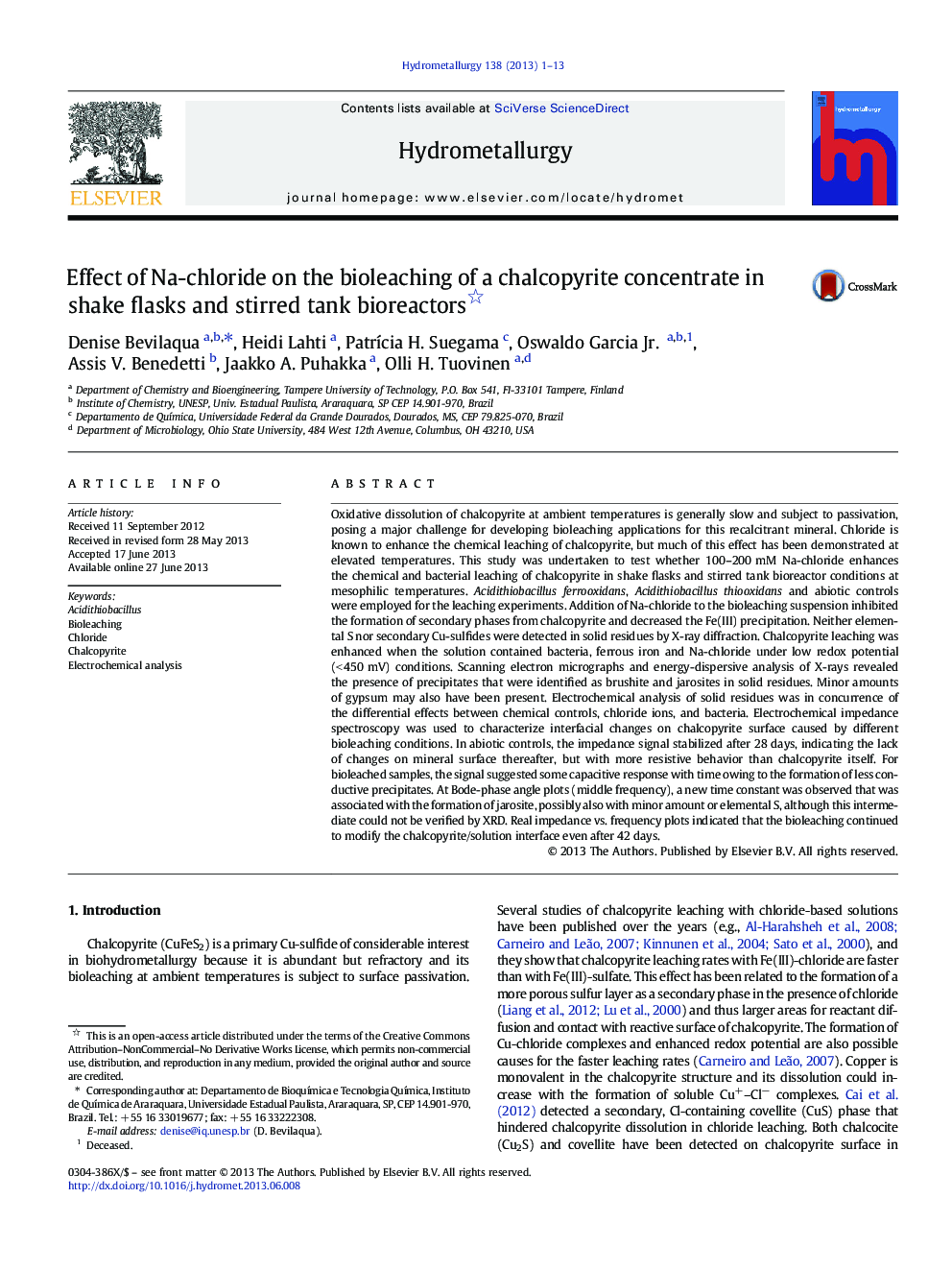| کد مقاله | کد نشریه | سال انتشار | مقاله انگلیسی | نسخه تمام متن |
|---|---|---|---|---|
| 6659297 | 462045 | 2013 | 13 صفحه PDF | دانلود رایگان |
عنوان انگلیسی مقاله ISI
Effect of Na-chloride on the bioleaching of a chalcopyrite concentrate in shake flasks and stirred tank bioreactors
دانلود مقاله + سفارش ترجمه
دانلود مقاله ISI انگلیسی
رایگان برای ایرانیان
کلمات کلیدی
موضوعات مرتبط
مهندسی و علوم پایه
مهندسی شیمی
مهندسی شیمی (عمومی)
پیش نمایش صفحه اول مقاله

چکیده انگلیسی
Oxidative dissolution of chalcopyrite at ambient temperatures is generally slow and subject to passivation, posing a major challenge for developing bioleaching applications for this recalcitrant mineral. Chloride is known to enhance the chemical leaching of chalcopyrite, but much of this effect has been demonstrated at elevated temperatures. This study was undertaken to test whether 100-200Â mM Na-chloride enhances the chemical and bacterial leaching of chalcopyrite in shake flasks and stirred tank bioreactor conditions at mesophilic temperatures. Acidithiobacillus ferrooxidans, Acidithiobacillus thiooxidans and abiotic controls were employed for the leaching experiments. Addition of Na-chloride to the bioleaching suspension inhibited the formation of secondary phases from chalcopyrite and decreased the Fe(III) precipitation. Neither elemental S nor secondary Cu-sulfides were detected in solid residues by X-ray diffraction. Chalcopyrite leaching was enhanced when the solution contained bacteria, ferrous iron and Na-chloride under low redox potential (<Â 450Â mV) conditions. Scanning electron micrographs and energy-dispersive analysis of X-rays revealed the presence of precipitates that were identified as brushite and jarosites in solid residues. Minor amounts of gypsum may also have been present. Electrochemical analysis of solid residues was in concurrence of the differential effects between chemical controls, chloride ions, and bacteria. Electrochemical impedance spectroscopy was used to characterize interfacial changes on chalcopyrite surface caused by different bioleaching conditions. In abiotic controls, the impedance signal stabilized after 28Â days, indicating the lack of changes on mineral surface thereafter, but with more resistive behavior than chalcopyrite itself. For bioleached samples, the signal suggested some capacitive response with time owing to the formation of less conductive precipitates. At Bode-phase angle plots (middle frequency), a new time constant was observed that was associated with the formation of jarosite, possibly also with minor amount or elemental S, although this intermediate could not be verified by XRD. Real impedance vs. frequency plots indicated that the bioleaching continued to modify the chalcopyrite/solution interface even after 42Â days.
ناشر
Database: Elsevier - ScienceDirect (ساینس دایرکت)
Journal: Hydrometallurgy - Volume 138, June 2013, Pages 1-13
Journal: Hydrometallurgy - Volume 138, June 2013, Pages 1-13
نویسندگان
Denise Bevilaqua, Heidi Lahti, PatrÃcia H. Suegama, Oswaldo Jr., Assis V. Benedetti, Jaakko A. Puhakka, Olli H. Tuovinen,